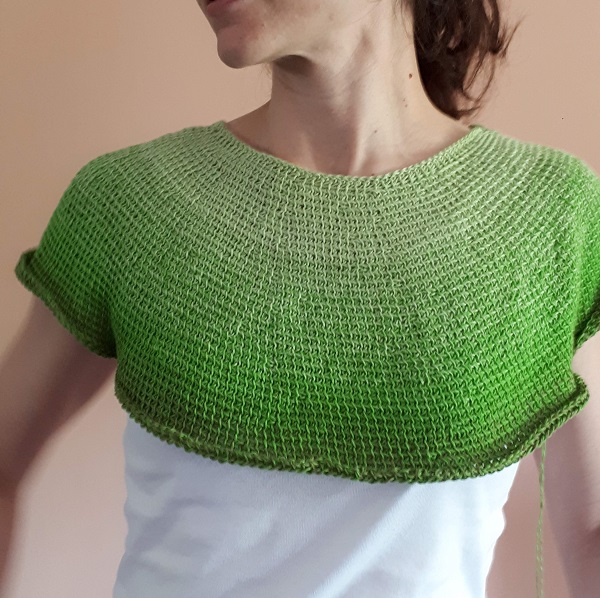There is no such thing as standard body shapes. We are all unique. Even if a pattern for a garment provides explanations for several sizes, the indicated measurements will never exactly match with all existing body shapes. Even our posture has an impact on how a garment fits. And then we should take ease into account: some prefer to wear clothes tight around their body, others only go for large, comfortable clothes. Hence the need to adjust garments. It’s fairly easy to do with a top down construction.
Continue readingCategory Archives: Techniques EN
Tunisian crochet in colors
One of the great things about Tunisian crochet is that changing colors can be done in multiple ways and give really interesting effects: stripes, mixed colors, motifs, fair isle… In this article, I show you a few things that can be done with Tunisian colorwork techniques. With these few tips I hope you will explore the endless possibilities that changing colors in Tunisian crochet has to offer.
Continue readingSimple wet blocking
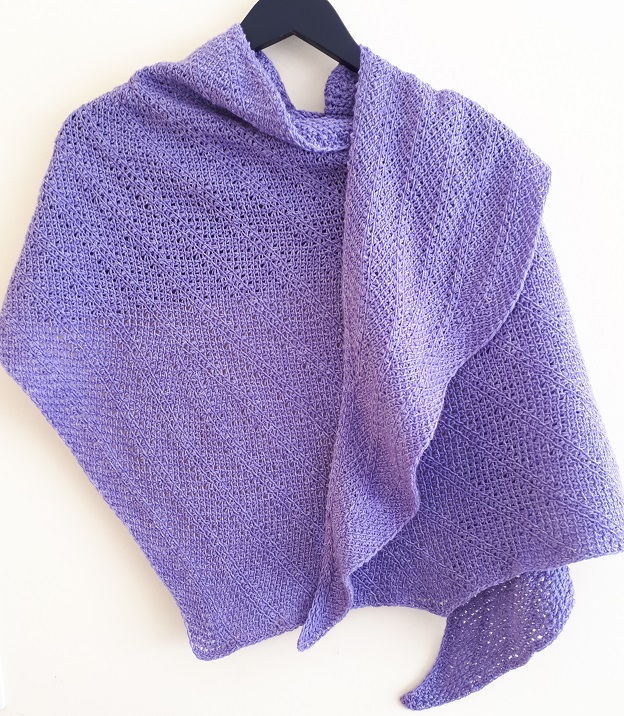
Blocking is a very important step in the making of a knitting or crochet project. The blocking techniques will be different depending on the type of fibre used in the project (wool, linen, cotton, synthetic yarn) and the type of project (blanket made of different squares, shawl, pullover, beanie), but in all cases blocking will help giving a nice finishing touch. Don’t underestimate the power of blocking.
In this article I present a very simple technique (I believe the most basic one) to block a project made of wool.
Continue readingDecrease on the return pass
On my site you’ll find 7 different types of Tunisian crochet decreases. Today I’d like to go into more technical details about the decrease on the return pass. It’s fairly technical. But illustrated with a video.
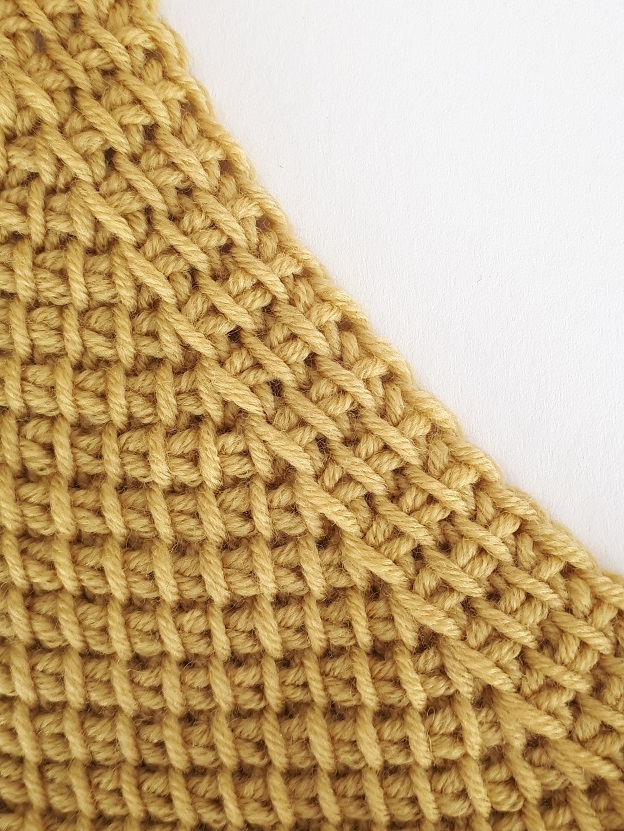
Counting stitches
Before you start a Tunisian crochet project, ideally you make a swatch to count how many stitches you have per the measurement indicated in the pattern. However, counting stitches is not as easy as it may seem at first glance.
For example, in the sample below, how many Tunisian simple stitches do you count?
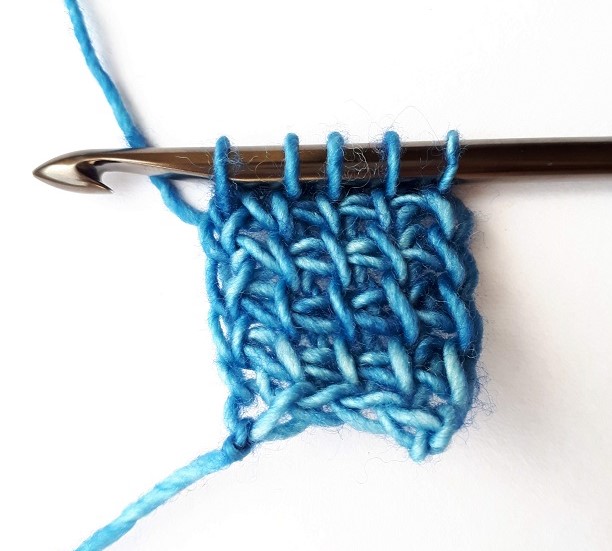
How to defeat curling in Tunisian crochet
A Tunisian crochet work will always tend to curl. And curling can be severe if the fabric is dense. It’s a pure mechanical thing with weight and tension not evenly spread over the crochet work. Curling occurs when there is more fabric on one side of the work (usually but not always the back side of work).
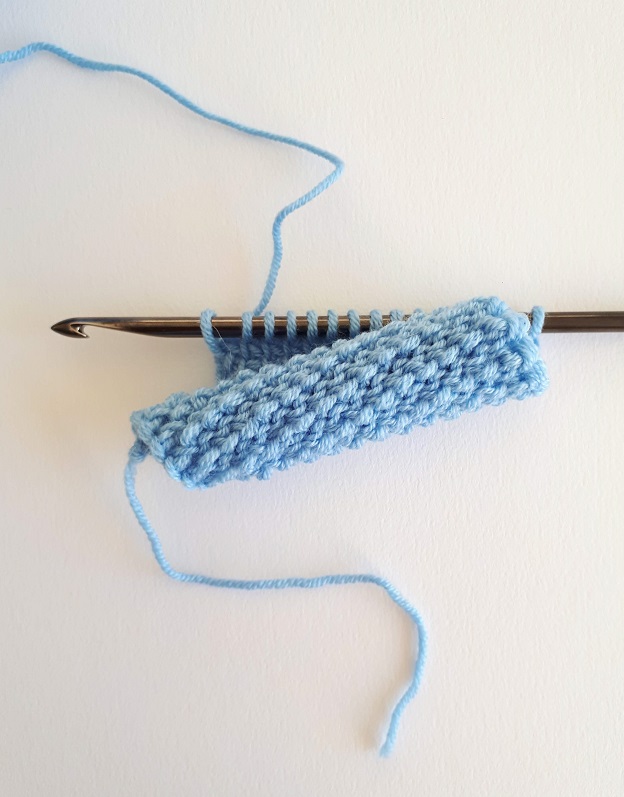
The good news is there are a few things that can be done to fight against curling. You should take several aspects of your work into consideration and, ideally, combine several techniques to minimize curling.
Continue readingDouble-ended hook worked flat
Today I added a page to show the basic principles of working a sample flat with a double-ended Tunisian crochet hook.
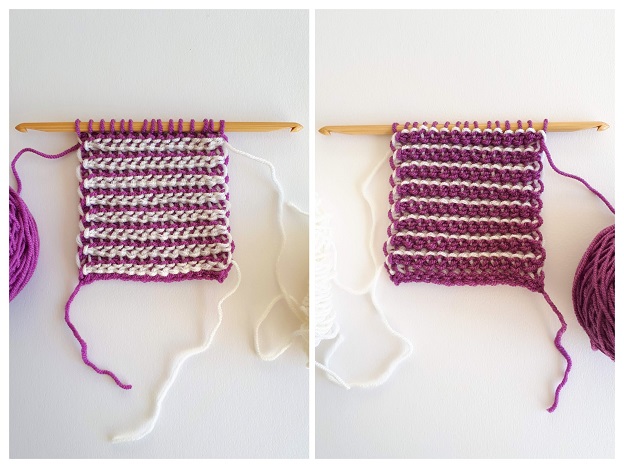
This technique can be worked in many different ways by varying stitches used and changing colors at different places. The fabric is reversible if you work the same stitches in all rows. Or can be different on the front and back sides if you opt for different stitches from one row to the next. Possibilities are endless.
Working in a spiral with a double-ended hook
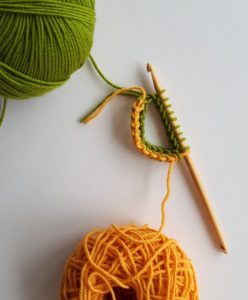
New page added to my site today. This time about working in a spiral with a double-ended Tunisian crochet hook. I added a photo tutorial and a video (in French) to show the basic steps of the technique. I used the Tunisian simple stitch to keep things easy-peasy. But you can use any other Tunisian stitch to have a different texture in your work. I used 2 different colors, but you can use 2 balls of yarn in the same color. You can even use both ends of the same yarn ball.
A new page in the menu: on double-ended Tunisian crochet
Today the plan was to update my site with double-ended Tunisian crochet techniques. But then I realized I had a few things to share about the double-ended hooks… So I created an entry “Double-ended” in the menu “Tunisian crochet”.
I have a clear-cut opinion about single-ended Tunisian crochet hooks. I work with and recommend interchangeable hooks. But about double-ended hooks, mmm… I’m not so sure what I like best.
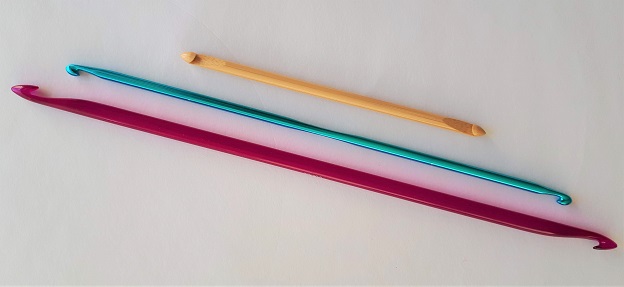
Magic ring (or circle)
So today I planned to tell you a bit about the magic ring (or circle). It’s a technique I use only when I make beanies (obviously starting from the top) or projects in a semi-circle shape.
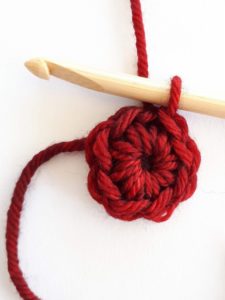
It’s a very useful technique to make amigurumis. I started crocheting Dougal the mar from the EdinYarnFest. This magic circle, that’s very handy. I’ll share photos of Dougal later this week.
I made a short video (in French) to show how I do my magic circle. There are plenty of other methods to reach the exact same result. The one I show on the video works fine for me. See if it helps you. This technique required a bit of practice in the beginning.
Another way to start from the center of a circle is to make 2 chains and then start making stitches in the second chain from the hook. It’s really easy, but it makes the central part very fragile, easy to break. Be especially cautious with thin yarn: it could break just because of the weight of a big shawl or simply under sudden strong traction.
Other option: make 3 or 4 chains and join both ends with a slip stitch. Then make stitches by inserting your hook directly into the center of the circle or in the chains forming the edge of the circle. You’ll have something solid, resistant (like in “nothing to fear”), but you’ll always have a small hole, a tiny space. Especially with thin yarn.
Now that I have written this article, I wonder: Should I add this technique in the menu “Tunisian crochet”? Or create a new menu? But what would be this new menu? Tips and hints? I’m tempted to add the magic circle/ring to the page on “Foundations rows and other cast on techniques“. That’s probably what I’ll do. Tomorrow. After all, the magic circle is about starting a project. What do you think?

